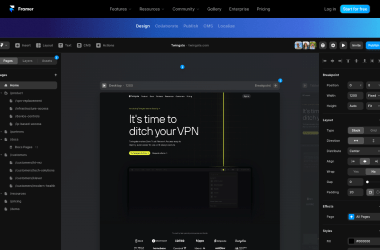Updated: Nov 07, 2024 By: Marios

DDoS attacks are constantly getting easier and cheaper to launch, which is terrible news for organizations that aren’t prepared for one. The majority of websites and web applications will be hit at some point, so for many organizations, it is a question of how to prepare rather than how to avoid one of these attacks.
Because a DDoS attack is hard to stop, effective DDoS protection is crucial to your website or application’s performance. While prevention can be expensive, it’s important to balance this expense with the projected cost of an attack, which can cost hundreds of thousands of dollars for every hour of downtime.
DDoS Attacks are Cheap and Ubiquitous
The growth of Internet of Things (IoT) devices has been great for consumer convenience. Everything from smart thermostats to smart video doorbells are available, which has created incredible convenience for households.
Unfortunately, this has also created great convenience for malicious actors. IoT growth means enormous numbers of remotely accessible devices, and these devices are often poorly secured, if they are secured at all. They are all connected to both private networks and the cloud. This creates a perfect storm for botnet creation.
When all of these low-security, unmonitored devices are recruited, they form massive botnets that contribute to record-breaking DDoS attacks. Even the smaller DDoS attacks are larger and last longer than they have in the past.
DDoS attacks take advantage of IoT growth and cheap cloud infrastructure to perform large-scale attacks, and this can have heavy ramifications for your organization. Generally, attackers are looking for the easiest, cheapest way to take down or access your website or applications, and DDoS is becoming an increasingly desirable option.
The attackers don’t have to purchase the devices, and they generally aren’t paying for the cloud hosting. Aside from some time and a small investment in pre-written code, there are nearly zero costs associated with these large DDoS attacks. Launching one does not require vast expertise or security evasion tactics; if the attacker has a botnet and instructions, the attack is ready for launch.
The DDoS Tradeoff

Because DDoS attacks are becoming so common, having protective measures in place is important. However, companies often need to choose between protection and downtime as the cost of DDoS protection can add up quickly. It’s certainly much higher than the costs of attacking.
On the flip side, downtime as a result of DDoS attacks can be crippling to your organization. Legitimate traffic is blocked during one of these attacks, and if your customers are trying to access their own data but cannot, you could be in violation of data privacy regulations. The results of downtime include:
- Loss of revenue. If customers are attempting to purchase something on your website, for example, a DDoS attack will stop that process and prevent the transaction from completing. It is possible that a frustrated customer will return to try again later, but you may find a significant number do not.
- Reduced returning customers. Once a DDoS attack has occurred, your customers may decide to work with a competitor instead. When someone wants to make a purchase, access a portal, or use any other function of your website or application, it is frustrating to be denied service.
- Reputation damage. Much of an organization’s continued success rests on its reputation. If you develop a reputation for being down or slow, you will be less able to attract new business.
- Potential litigation. Depending on the severity of the attack, your downtime could create bigger problems than just lost customers. If your organization handles data for hospitals or airlines, for example, downtime will be detrimental to everyone’s operations.
- Fines. A feature of many privacy regulations is that your organization must provide consumers with access to their data at all times. If consumers cannot access their data for extended periods of time, this may be considered a violation. Under the GDPR, it is a punishable offense.
Most of the time, a DDoS attack ends when the attacker decides it’s over and no earlier. This is not always the case for organizations that have DDoS mitigation solutions in place, but if you do not, you have very little control over the outcome.
Additionally, some mitigation solutions will cost you more than others. If your solution is an automatic increase in bandwidth to accommodate the traffic influx, you’ll be paying for a lot of extra bandwidth.
So, if you do not have DDoS defenses in place, the cost of an attack is not up to you. Once the attack starts, you will find it is very challenging to stop as all of your server resources are tied up with responding to the attack queries. The question that remains is whether your organization can weather the downtime or it needs protection.
Optimizing DDoS ROI
DDoS protection isn’t cheap, but it shouldn’t be the most expensive security measure that you purchase either. Choosing the right DDoS solution provides robust protection against attack for an affordable price; however, be cautious not to choose the cheapest solution you can find. Ensure that the solution will cover all of your bases.
When you choose a solution, you’ll get the best return on your investment if it protects at both the network and application layers. The most effective solutions will also offer individual IP address protection.
Instead of relying on purchasing more bandwidth, consider a solution that will route traffic away from your servers. You want to find a solution that will work to ensure there is no major downtime, and that means keeping the DDoS attack traffic from completing their requests to your resources.
To distinguish between legitimate and illegitimate traffic, a good solution will analyze patterns, and block based on preset rules. Adaptability is key, however, so the solution should also be able to adjust based on performance feedback.
A cheap solution that doesn’t block the attack costs you money on the front end, and you’ll still have to deal with all the costs of downtime. For most organizations, not implementing protection at all is not a viable choice in the long run, so be sure to carefully weigh your options. The right DDoS protection may very well pay for itself.



